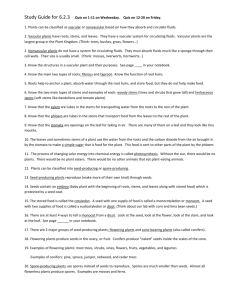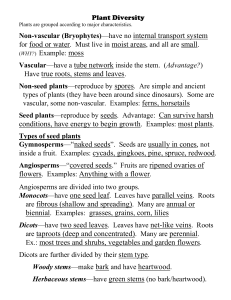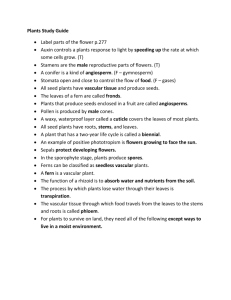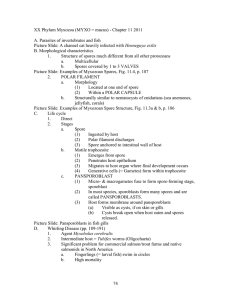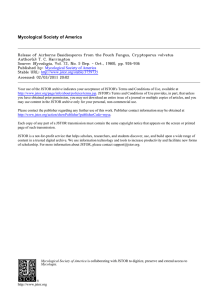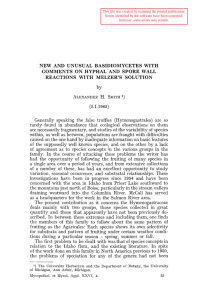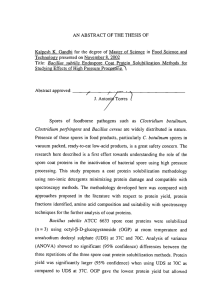Plant Kingdom
advertisement
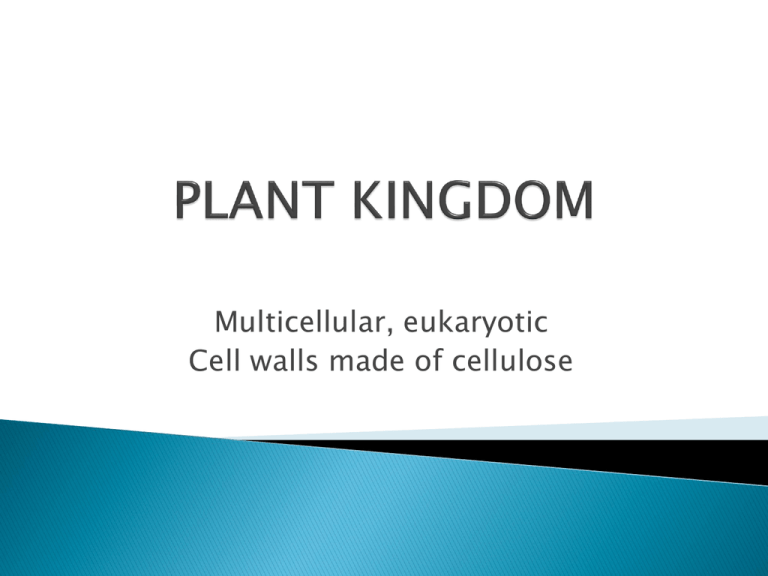
Multicellular, eukaryotic Cell walls made of cellulose Plant body is usually small in size, does not have well-defined organs, such as roots, stems and leaves; does not have specialized fluid-transporting tissues that move food and water. Plant body is usually large in size; has organs, such as roots, stems and leaves; has specialized fluid-transporting tissues that move food and water. Non-vascular plant that has a plant body that is leafy and upright. Non-vascular plant that has a flat body shape (liver-shaped) Non-vascular plant that has a flat body with spore cases shaped like horns sticking up from the plant. Vascular plants that reproduce by spores. They have broad, triangular leaves; round spore cases containing the spores on the underside of leave; root-like stems called rhizomes present. Vascular plants that reproduce by producing seeds. They have needle-shaped leaves, seeds are produced in cones and they have no fruit or flowers present. Vascular plants that reproduce by producing seeds. They have broad-shaped leaves and the seeds produced are within the fruit. They have flowers present. Vascular plants. They reproduce by producing spores. They have scale-like leaves; cone-shaped spore cases containing spores at the top of the stem and root-like stems called rhizomes present. A vascular plant that reproduces by spores. It has scale-like leaves and spore cases that are bulb-shaped. These are found at the top of the stems. The root-like stems called rhizomes are present.


